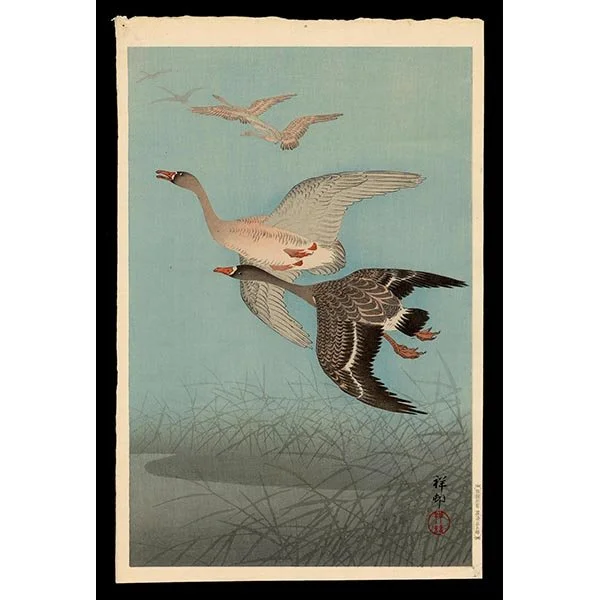SHOSON
COLLECTING JAPANESE PRINTS FEATURED SHIN HANGA ARTISTOhara Shoson
1877 - 1945
Profile at a Glance:
Utagawa School Ukiyo-e artist
Produced some of the most iconic landscape designs in Ukiyo-e; also created kacho-e
Hoeido Tokaido was his first landscape series executed and is considered his first masterpiece
Produced several different Tokaido series
One Hundred Famous Views of Edo was his last series; considered among his best work
Ohara Shoson (Koson) was a Meiji-era painter and kacho-e (bird and flower) print artist born in 1877 in Kanazawa Prefecture. Ohara enrolled in the Tokyo Art School's Shijo painting division, where he studied kacho-e under Suzuki Kason and Ernest Fenollosa. Such traditional prints were previously adapted by artist Ogata Gekko and continued by Ohara.
As opposed to shin hanga, which utilized bijin-ga, actor, or landscape motifs, kacho-e was an exercise of technical skill rather than nostalgic beauty. Ohara briefly experimented with the woodblock print medium, depicting scenes from the Russo-Japanese War (1904–1905) before returning to kacho-e at the beginning of the Taisho era. He produced a variety of prints that were exported (mainly to the United States) by Matsuki Heikichi of the Daikokuya publishing company.
From 1912 to 1925, he changed his name to Shoson and dedicated himself to painting for the next fourteen years. In 1926, Ohara began designing prints for publisher Watanabe Shozaburo, who had an intuitive understanding of the genre's popularity in the West. Among Ohara's other publishers throughout the 1930s were Nishinomiya Yosaku and Sakai-Kawaguchi (under whom he continued using the name Shoson). Some of Ohara's more famous works include Crow on a Snowy Branch (c. 1911–1915), Geese (c. 1926), and Cockatoo and Pomegranate (c. 1927).





